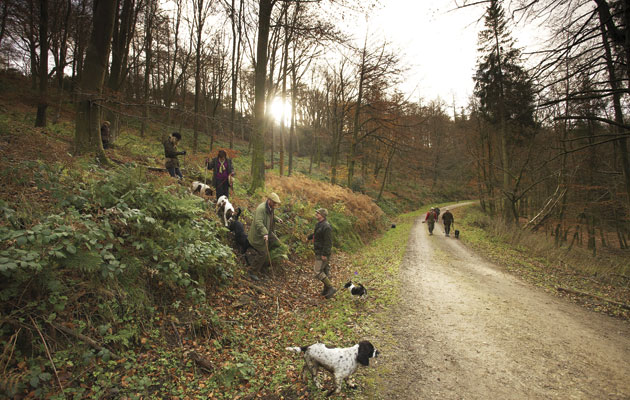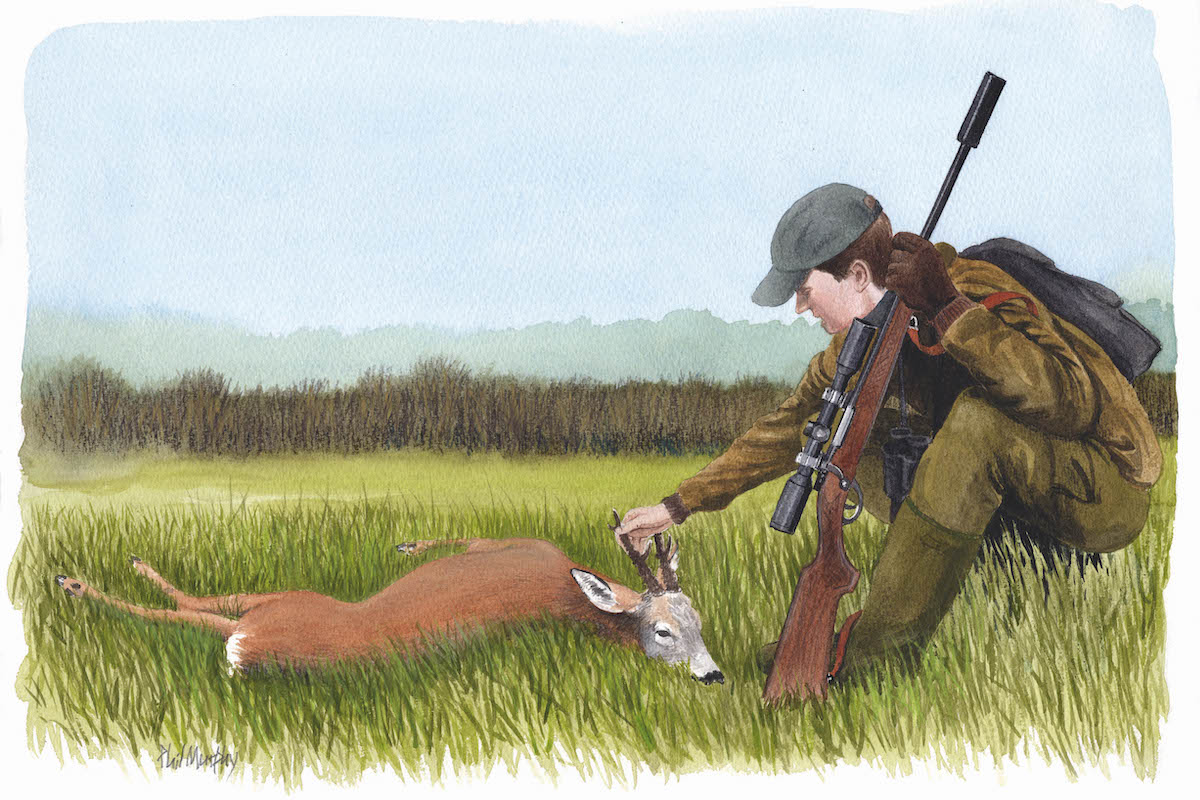Magna Carta – how did it shape our fieldsports heritage?
Magna Carta is 800 years old in 2015, and Jeremy Hobson explains how the subsequent forest laws helped give us the right to enjoy a plethora of fieldsports.

As you stand patiently in a patch of woodland in any county of England waiting for a deer, with an equally patient tracking dog by your side, it might be worth considering where the freedom to do so came from in the first place. Back in the days after William the Conqueror’s successful invasion, if you were caught with a canine companion over a certain size, it might well have had its toes removed and you could have suffered a similar punishment, or worse.
During the 12th century, kings Henry (I and II), William II (he of the suspected arrow assassination) and subsequently King John himself all guarded their vast swathes of hunting forests assiduously. The term ‘forest’ was a legal one and used to define areas subject to stringent and strictly imposed protection from the commoners of England.
Thus, had you been caught in places such as Windsor, Sherwood and the New Forest, with the obvious intent of taking the king’s deer, a court appearance might have led to you being blinded or having a hand amputated. To be caught having actually killed one of the king’s deer could result in a death sentence.
Dogs over a certain size and which, in the opinion of judge and jury, were capable of coursing and pulling down a deer, were required to have a pad and/or some of their toes amputated. In the New Forest the height of a dog capable of hunting was decided by the Rufus Stirrup. Any dog that couldn’t walk easily through was deemed a threat to deer stocks and treated accordingly.
Magna Carta and the Charter of the Forest
It was obviously not a good time for the commoner or his dog. But then along came the Magna Carta, agreed by King John at Runnymede on June 15, 1215. And perhaps more importantly to those who hunt, shoot and stalk, came its companion document, the Charter of the Forest.
As most school children are taught, King John was not a good king. In five years he managed to lose much of France, which had been owned by the family of his great, great grandfather William. And, in an effort to regain the land by battle, which cost vast sums of money raised by taxes, he created huge unrest in England.
He was eventually forced to ‘sign’ (it is thought John couldn’t write) the 1215 document by his barons and church leaders, which went some way towards rectifying the immediate situation and pacifying his councillors. Ultimately it has proved to be the basis of constitutional democracy in the US and elsewhere.
Exbury Estate: Game shooting in Hampshire
Exbury: With arguably the finest informal gardens in England, Exbury estate was once described as ‘heaven with the gates open’.…
The Charter of the Forest – important in being complementary to the Magna Carta – proved extremely valuable to the ordinary man as it gave him more rights, particularly when it came to what one could and couldn’t do in the English countryside. Its effect elsewhere took time; the Welsh lords and northern border chiefs were, it must be said, a law unto themselves.
Whilst in no way giving absolute freedom of access, the Charter of 1217 (re-issued in 1225) allowed the rights to collect wood, graze animals and, according to clause 10: “No one shall henceforth lose life or limb because of our venison, but if anyone has been arrested and convicted of taking… he shall be fined heavily if he has the means; and if he has not… he shall lie in our prison for a year and a day.”

Before the Magna Carta, if you and your dog were found in pursuit of the king’s deer, dreadful medieval punishment awaited you both.
Known by some as the Commoners’ Charter, Clause 17 went even further: “These liberties concerning the forests we have granted to everybody… All these aforesaid customs and liberties which we have granted to be observed… as far as it pertains to us towards our men, all of our kingdom, clerks as well as laymen…”
Occasionally revised, the Commoner’s Charter remained effectively in force for many centuries. Although ensuing monarchs continued to hunt in the royal forests (kings James I, Charles I and II all hunted in Sherwood and elsewhere), their absolute powers were no more.
Magna Carta and land redistribution
Those with nefarious intent could obviously still be prosecuted for taking game and deer illegally, but it was unlikely to result in blinding or hand mutilation, or even imprisonment for the statutory year and a day. Some of the edicts first brought about in the Commoners’ Charter eventually morphed into various game laws – such as the Poaching Act of 1828 and the Game Act of 1831. The latter, while it still protected game in an overall sense, meant that provided one had the correct requirements (a game licence, for example), the right was given to anyone “to kill game on their own land, or on that of another with permission.”
These days the game licence is no longer needed to kill or take a deer in Britain, but they are protected under the provision of the Deer Acts and orders, some of which originate from the original Forest Charter. Along the way, various parts of the Magna Carta were used to create many quite obscure legislative opportunities.
For example, the Church was, for many years, England’s greatest landowner and – it has to be said – one of the most despotic. After Henry VIII famously brought about the dissolution of the English monasteries in 1536, much of the Church’s land was distributed – either as a gift or by sale – into private hands. Originally huge acreages, the further division eventually resulted in the country house estates that are still recognisable today.
No matter what the acreage, deer were still the favoured quarry. Whether it was the result of their easier accessibility to some is unclear but, in the late 17th century, the overall deer population diminished. One likely reason was the extensive woodland clearances undertaken at this time.
Without the Charter of the Forest and its subsequent amendments, it is unlikely that many – if any – of us would be in a position to enjoy and participate in our hunting pursuits in the way we do in the 21st century. Most of us have just cause to be grateful to the Norman barons and their insistence on ‘bad’ King John adding his seal of approval to the Magna Carta. And it does no harm to remind ourselves of what the signing of it, some eight centuries previous, has done for us.









